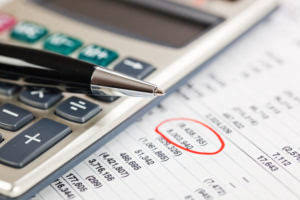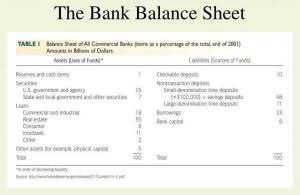
This straightforward calculation allows you to quickly determine your COGS based on your most recent inventory costs. The calculated inventory value may not accurately reflect current market prices. This is the total value of your products at the start of your accounting period (typically a month, quarter, or year). Your ending inventory value appears on both your net income statement and balance sheet. These documents are reviewed by executives, lenders, and investors, making accuracy crucial for maintaining trust and credibility. Make sure your ending inventory reflects the value of your most recent purchases, since FIFO assumes the oldest items are sold first.
Key takeaways

FIFO works best when COGS increases slightly and gradually over time. If suppliers or manufacturers suddenly raise the price of raw materials or goods, a business may find significant discrepancies between their recorded vs. actual costs and profits. A higher inventory valuation can improve a brand’s balance sheets and minimize its inventory write-offs, so using FIFO can really benefit a business financially. Notice that Susan lists the 130 units remaining in her inventory as costing $4 apiece. This is because she presumes that she sold the 80 units that she bought for $3 apiece first. This method can be useful for quick estimations, but remember its limitations.
Inventory Grouping
However, LIFO can lead to outdated inventory valuation on the balance sheet. Additionally, it is not permitted under International Financial Reporting Standards (IFRS) and is mainly used in the U.S. under Generally Accepted Accounting Principles (GAAP). The cost of goods sold (COGS) includes direct expenses involved in producing or purchasing goods, but it excludes indirect costs related to operations, marketing, and administration. The costs of buying lamps for his inventory went up dramatically during the fall, as demonstrated under ‘price paid’ per lamp in November and December. So, Lee decides to use the LIFO method, which means he will use the price it cost him to buy lamps in December. Let’s say you’ve sold 15 items, and you have 10 new items in stock and 10 older items.
Transport Management System (TMS)
For international shipping businesses, FIFO offers notable advantages. For more insights into eCommerce international shipping, check out this guide on international shipping. Regular inventory assessments guarantee your financial records are accurate and help you detect any inventory issues early on.
Each time an item is purchased or sold, the inventory records are immediately updated. When using FIFO with a perpetual system, the cost of goods sold is calculated and recorded at the time of each sale, ensuring that the inventory cost flow aligns with the FIFO assumption instantly. This https://peledtech.com/enter-debit-and-credit-memos/ quantity will dictate how many units’ costs need to be pulled from the inventory layers. The FIFO calculation assumes units sold came from the earliest available inventory. You assign costs from the beginning inventory first, then from the first purchase, then the second, and so on, until the total units sold are reached. FIFO — first-in, first-out method — considers that the first product the company sells is the first inventory produced or bought.
Documentation Essentials for FIFO Accounting

Although the oldest inventory may not always be the first sold, the FIFO method is not actually linked to the tracking of physical inventory, just inventory totals. However, FIFO fifo cogs formula makes this assumption in order for the COGS calculation to work. Therefore, you might rethink your inventory valuation strategies to mitigate increased tax liabilities with FIFO during inflation. However, FIFO can lead to increased tax liabilities due to higher reported profits during periods of inflation.

- You must use the same method for reporting your inventory across all of your financial statements and your tax return.
- Beginning inventory refers to the monetary value of all inventory a business possesses at the start of an accounting period.
- The remaining inventory would then consist of 2,000 units from the second batch at $1.75 each, totaling $3,500.
- Bertie also wants to know the value of her remaining inventory—she wants her balance sheet to be accurate.
- You need to analyze and consider these when choosing an inventory valuation method.
Then, how much you record as COGS will impact the net profit margin. If COGS shows a higher value, profitability will be lower, and the company will have to pay lower taxes. Meanwhile, if you record a lower COGS, the company will report a higher profit margin and pay higher taxes. You can use our online FIFO calculator and play with the number of products you sold to determine your COGS.

Using the FIFO method, the cost of goods sold (COGS) of the oldest inventory is used to determine the value of ending inventory, despite any recent changes in costs. For inventory tracking purposes and accurate fulfillment, ShipBob uses a lot tracking system that includes a lot feature, allowing you to separate items based on their lot numbers. For example, say a rare antiques dealer purchases a mirror, a chair, a desk, and a vase for $50, $4,000, $375, and $800 respectively. If the dealer sold the desk and the vase, the COGS would be $1,175 ($375 + $800), and the ending inventory value would be $4,050 ($4,000 + $50). For example, say that a trampoline company purchases 100 trampolines from a supplier for $40 apiece, and later purchases a second batch of 150 trampolines for $50 apiece. Read on for a deeper dive on how FIFO works, how to calculate it, some examples, and additional information on how to choose the right inventory valuation strategy for your business.
Expiry Management
It also minimizes discrepancies during audits by providing a clear audit trail and enhances inventory turnover analysis, which is vital for optimizing stock levels and reducing holding costs. Last in, first out (LIFO) is another inventory costing method a company can use to value the cost of goods sold. Instead of selling its oldest inventory first, companies that use https://www.bookstime.com/articles/tax-season the LIFO method sell its newest inventory first.
- The cost of goods sold (COGS) is an accounting term used to describe the direct expenses incurred by a company while attempting to generate revenue.
- This article will cover what the FIFO valuation method is and how to calculate the ending inventory and COGS using FIFO.
- Cost of Goods Sold (COGS) represents the direct costs incurred in producing the goods a company sells.
- After all, if the first piece of inventory you bought was the same value as the last piece of inventory, there will be no difference in the calculation of your Cost of Goods Sold or ending inventory.
- This method assumes that the oldest items in your inventory are the first ones to be sold, and that the newer items remain in stock.
- For instance, if 100 units were purchased at $10 each, the per-unit cost is $10.
Add Purchases Made During the Period
Because FIFO assumes that the lower-valued goods are sold first, your ending inventory is primarily made up of the higher-valued goods. Arishekar N is a Director of Marketing & Business Development at AMZ Prep, with a proven track record of driving growth for e-commerce businesses. He is a strategic leader with extensive expertise in marketing, e-commerce operations, SEO & advertising, and branding.
